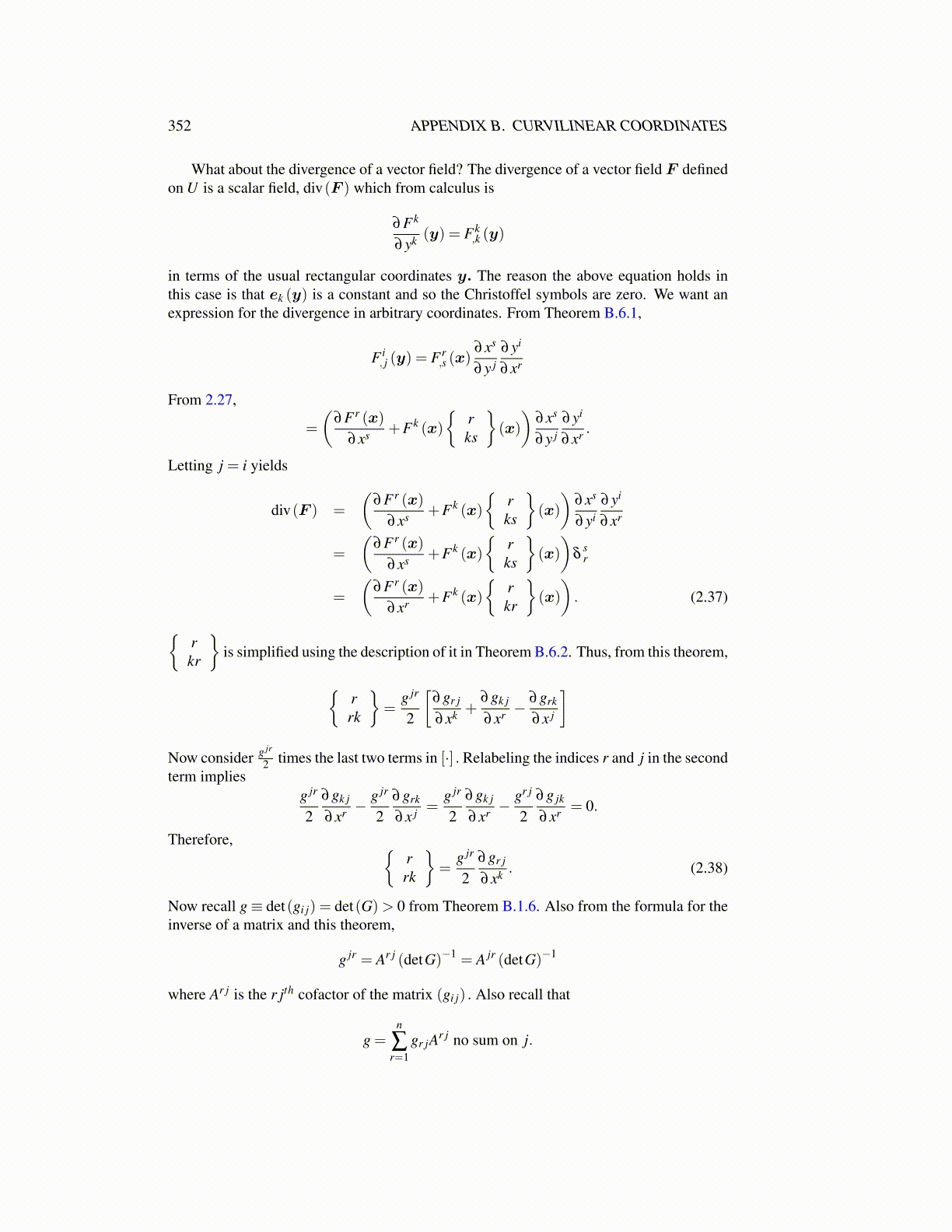
352 APPENDIX B. CURVILINEAR COORDINATES
What about the divergence of a vector field? The divergence of a vector field F definedon U is a scalar field, div(F ) which from calculus is
∂Fk
∂yk (y) = Fk,k (y)
in terms of the usual rectangular coordinates y. The reason the above equation holds inthis case is that ek (y) is a constant and so the Christoffel symbols are zero. We want anexpression for the divergence in arbitrary coordinates. From Theorem B.6.1,
F i, j (y) = Fr
,s (x)∂xs
∂y j∂yi
∂xr
From 2.27,
=
(∂Fr (x)
∂xs +Fk (x)
{rks
}(x)
)∂xs
∂y j∂yi
∂xr .
Letting j = i yields
div(F ) =
(∂Fr (x)
∂xs +Fk (x)
{rks
}(x)
)∂xs
∂yi∂yi
∂xr
=
(∂Fr (x)
∂xs +Fk (x)
{rks
}(x)
)δ
sr
=
(∂Fr (x)
∂xr +Fk (x)
{rkr
}(x)
). (2.37)
{rkr
}is simplified using the description of it in Theorem B.6.2. Thus, from this theorem,
{rrk
}=
g jr
2
[∂gr j
∂xk +∂gk j
∂xr −∂grk
∂x j
]Now consider g jr
2 times the last two terms in [·] . Relabeling the indices r and j in the secondterm implies
g jr
2∂gk j
∂xr −g jr
2∂grk
∂x j =g jr
2∂gk j
∂xr −gr j
2∂g jk
∂xr = 0.
Therefore, {rrk
}=
g jr
2∂gr j
∂xk . (2.38)
Now recall g≡ det(gi j) = det(G)> 0 from Theorem B.1.6. Also from the formula for theinverse of a matrix and this theorem,
g jr = Ar j (detG)−1 = A jr (detG)−1
where Ar j is the r jth cofactor of the matrix (gi j) . Also recall that
g =n
∑r=1
gr jAr j no sum on j.